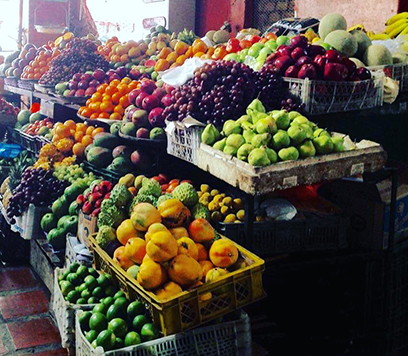CITY OF SALSA: SANTIAGO DE CALI
- bluejaguarart
- Jul 5, 2022
- 2 min read

One of my favorite places in the world is my hometown, Santiago de Cali. Dubbed “The Salsa Capital of the World” and “Heaven’s Outpost”, Cali has flourished into a dynamic, cosmopolitan city over the last few years. Located on the southwest region of Colombia and just two hours from the Pacific ocean, Cali is nestled in a large valley within the Andes mountain range: Cauca river Valley. The Cauca is one of the most important rivers in the country, and provides numerous communities with water, light transportation and food. Cali boasts a wonderful, balmy climate year round and extremely fertile ground. Thanks to the latter, the region is full of lush, vivid vegetation and abundant, healthy crops and livestock. The most important produce is sugar cane, whose bright green fields cover the landscape as far the eye can see. Beef Cattle is also a big industry in the area, and local ranchers mostly breed Brahman and Criollo cattle, big meat producers. The Cauca Valley is a region of cornucopia and tropical wonder.
The history of Cali is an interesting one. Before the Spanish Conquistadores pillaged the territory, it was inhabited by the fierce Calima tribe, rich in gold and culture, and rumored to be cannibals. The city was founded in 1536, and baptized “Santiago de Cali”, a name that combined the title of the Catholic apostle Santiago and the local label of the vanquished native culture. Cali is the third largest city in the country and one of the oldest metropolises, almost 500 years old. You can still visit old architectural structures left behind by the Spanish, like the Múdejar Tower and the Merced Museum. Charming vintage neighborhoods, like San Antonio and El Peñón, have done a great job preserving traditional colonial structures. Cali is a great example of harmonic coexistence of modern arquitecture and classic styles.
My favorite thing about Cali is its thriving Salsa music industry and the enormous positive impact it has on our history, culture and sense of identity. It unites all races, creeds and demographics. Salsa has no sense of race, wealth or status, Salsa is just unbridled joy. Salsa was born in New York in the 1940’s, surfacing from the medley of numerous Afrolatin rhythms brought by Caribbean immigrants, mainly from Cuba and Puerto Rico. Hence the name “Salsa”, translated to “sauce”: a combination of everything. By the 1950s it had achieved enormous popularity, and Salsa music labels began popping records to appease the demand. The first vestiges of Salsa music arrived to Cali in the 1960s as vinyl discs, brought by sailors that worked in international vessels. These LPs arrived to the port of Buenaventura first, being the most important Pacific coast port at the time. They then travelled by train to Cali, where they were avidly sought out by avid collectors and local music club owners. Little by little, Salsa music worked its way up the socioeconomical ladder, and became the widespread cultural and economical phenomenon we know today. One great example of the influence of Salsa on a enriching level is the Delirio Foundation, which I will be talking about in my next blog. Stay tuned!!





















Comments